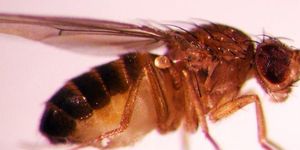Scientists Manage to Tag a Rare Night Parrot Thought to be Extinct
It isn't every day that you find a very rare animal out in the wild that experts thought to have gone extinct, which is exactly why a group of scientists in Australia are excited to have found a very rare species of nocturnal night parrot that was thought to have been extinct by many experts for over 100 years.

The type of bird that was found had not been found alive in the wild since 1890, and despite efforts to preserve the bird's existence here on Earth, it continues to be an incredibly rare species.
Despite never being found alive, it's worth noting that there have been two instances of the bird being found dead in the last 25 years, but even those numbers are still rare.
This night parrot is a type of ground-dwelling bird that scurries through bushes in an area of southwest Queensland, Australia.
After having found the rare bird, scientists decided to tag it in order to try and learn more about its lifestyle and habitat, a very common practice where a small and lightweight battery-powered tracking device is tied to the animal's leg so that scientists can track its movements and behavior.
"It's fantastic to have this bird, which is such an enigmatic creature," said Rob Murphy, the executive manager of a conservation group known as Bush Heritage Australia. "When you talk to bird lovers, this is the holy grail. It's like finding a thylacine."Before this research, we didn't know what they ate, where they got their water from or anything. We're really starting from ground zero with the night parrot."
The scientists also reportedly took some feather samples to look into the bird's DNA, and results were less than satisfactory because scientists weren't even able to detect if the bird had been a male or female.
Since the bird is so rare, the location where it was spotted has since been deemed "protected" and its exact location has been kept a secret to prevent poaching of the animal. The tracking device showed the bird's patterns, including where it would travel up to 8km every night in search for edible food, and then return to the same nesting site each and every time.
The tracking device has reportedly fallen off of the bird prematurely, although various cameras and other tracking equipment have been added to the location, and attempts to ward off potential predators have also been implemented in the area to improve the small bird's chances of survival.
This is great news for bird enthusiasts!
Source: The Guardian








